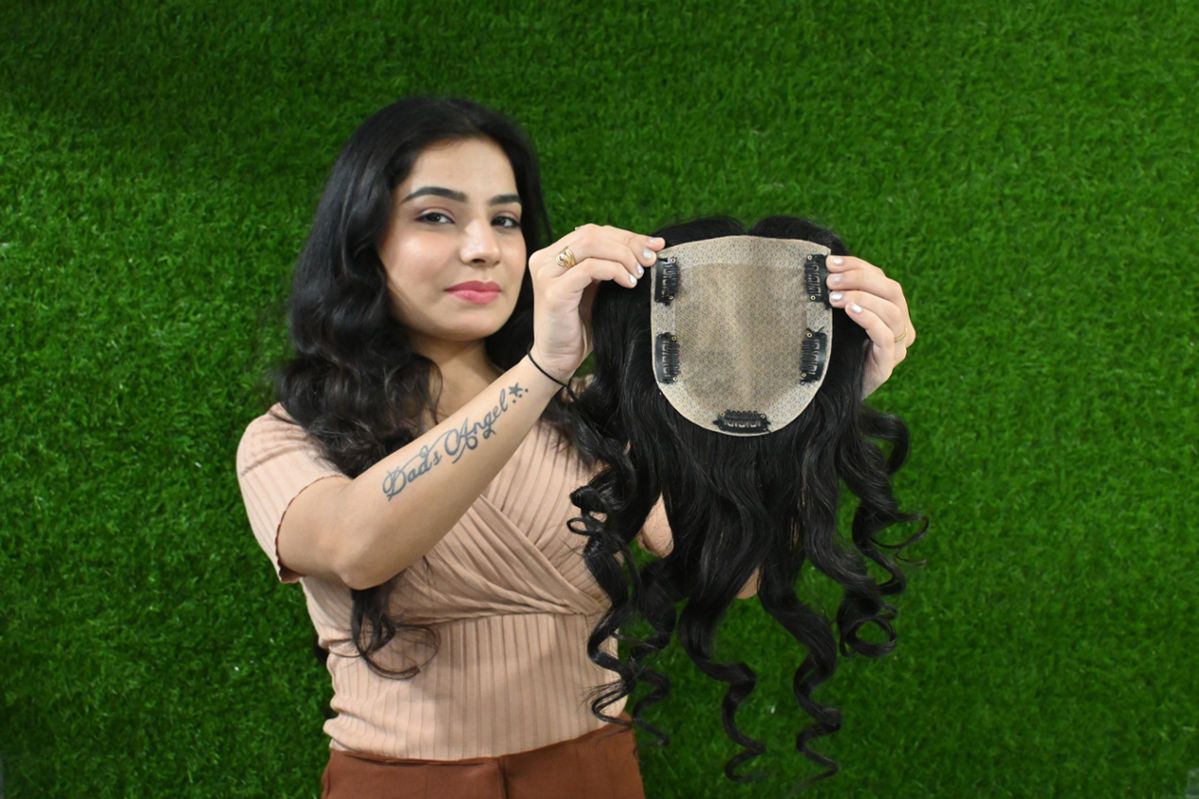Hair extensions have become an essential part of beauty routines for countless women across the globe. Whether you’re aiming for added volume, increased length, or a total hair makeover, extensions offer incredible versatility. But one question often arises: Can you color or heat-style hair extensions? Here’s the truth—it depends on the type of extensions you choose, the method of application, and the quality of the hair itself. In this detailed blog, we’ll break down everything you need to know about coloring and heat-styling hair extensions, the dos and don’ts, expert tips, and how to maintain their longevity while enjoying the freedom to experiment with your look.
Understanding Hair Extensions: Synthetic vs. Human Hair
Before we answer the question, can you color or heat-style hair extensions? Here’s the truth: it’s essential to understand the two primary types of hair extensions available in the market Hair extensions, especially Remy or virgin hair, have already undergone some level of processing, even if minimal. This affects how they absorb color.
1. Synthetic Hair Extensions
Synthetic extensions are made from plastic fibers designed to mimic the appearance of real human hair. They are usually more affordable and come pre-styled with limited options for customization. While they look good temporarily, synthetic extensions cannot be colored or heat-styled without risking severe damage. Attempting to apply dye or heat can cause synthetic strands to melt, frizz, or lose their shape permanently. So, if you enjoy regular styling and color changes, synthetic extensions are not the best choice.
2. Human Hair Extensions
Human hair extensions, on the other hand, are made from 100% real human hair and offer unmatched flexibility. These can be curled, straightened, dyed, and styled like natural hair. However, this also means they require the same level of care and attention. Can you color or heat-style hair extensions? Here’s the truth: Yes, if they are made from human hair. But even with human hair extensions, there are precautions and techniques you must follow to maintain their quality.
Can You Color Hair Extensions?
If you’ve ever purchased hair extensions and wondered, Can I dye these to match my current hair color or try something bold? — you’re not alone. Many users find themselves asking, Can you color or heat-style hair extensions? Here’s the truth: it entirely depends on the type and quality of the extensions you’re working with.
The Honest Answer: It Depends on the Hair Type
Hair extensions come in two primary types—synthetic and human hair. Only human hair extensions can be safely colored. Synthetic hair, though affordable and convenient, is made from plastic-based fibers that don’t absorb dye. Attempting to color synthetic hair can lead to severe damage, including frizzing, melting, or even complete loss of structure. But when it comes to human hair extensions, the answer is yes, with some important considerations.
What Happens When You Color Human Hair Extensions?
Even though human hair extensions are made from real hair, they behave slightly differently from the hair growing from your scalp. Human hair extensions, especially Remy or virgin quality, have already undergone some amount of processing. This makes them more porous than natural hair and more likely to absorb color quickly and unevenly if not handled correctly. So, can you color or heat-style hair extensions? Here’s the truth: yes, but color-treating extensions takes skill, product knowledge, and extra care.

Best Practices for Coloring Hair Extensions
To achieve a flawless color without compromising the integrity of the extensions, it’s important to follow best practices. Here’s how to color your hair extensions the right way:
1. Choose the Right Type of Extensions
Not all human hair extensions are created equal. If you plan on coloring them, go for virgin human hair or Remy human hair. Virgin hair has never been chemically treated, which makes it the most receptive to dye. Remy hair, with intact cuticles aligned in the same direction, holds color better and resists tangling. Avoid coloring non-Remy or heavily processed extensions, as they are more prone to breakage and uneven dye absorption.
2. Stick to Darker Shades
Darkening your extensions is always safer than lightening them. Applying semi-permanent or demi-permanent colors to go a few shades darker generally works well. Bleaching extensions to achieve lighter hues, however, can cause dryness, brittleness, and even breakage. If your desired outcome requires a significant color lift, consult a professional hairstylist to avoid damaging the strands.
3. Perform a Strand Test
Before committing to a full dye job, always perform a strand test on a small section of the extensions. This lets you preview the result and assess how the hair reacts to the chemicals. You can check for unexpected tones, texture changes, or uneven color patches before it’s too late to turn back.
4. Use High-Quality, Ammonia-Free Products
Cheap dyes and bleach mixtures often contain harsh chemicals like ammonia and parabens, which strip moisture from your extensions. Choose professional-grade, sulfate-free, and ammonia-free hair dyes designed for use on chemically treated or delicate hair. Extensions don’t get the natural oils from your scalp, so moisture retention is essential.
5. Prep the Extensions Properly
Before applying any dye, wash your extensions with a gentle clarifying shampoo to remove any residue, oil, or product buildup. Let them dry completely and lay them flat on a clean surface or foil during application to ensure even saturation. Don’t use conditioner before coloring—residue can create a barrier that prevents the dye from taking evenly.
6. Apply the Color Evenly
When applying the dye, saturate the extensions completely, from root to tip. Use a wide-tooth comb or color brush to distribute the product evenly. Uneven coverage can lead to patchy results, especially with darker colors or bright hues. Work in small sections and take your time. Rushing the application is one of the main reasons for poor coloring outcomes.
7. Let the Color Develop, Then Rinse Gently
Allow the color to develop according to the dye manufacturer’s instructions—typically 20–40 minutes. Rinse the extensions with cool to lukewarm water and apply a deep conditioner or hair mask immediately to restore moisture. Avoid hot water, which can dry out the strands and make them feel coarse.
Final Thoughts
So, can you color or heat-style hair extensions? Here’s the truth: absolutely—but only with high-quality human hair and a careful approach. Coloring your extensions offers endless possibilities for personalization, transformation, and creativity. Whether you’re blending them with your natural hair or trying a new hue entirely, the key is to prioritize quality, use the right products, and maintain a healthy routine post-coloring. If done correctly, coloring hair extensions can open the door to new styles and greater confidence, all while keeping your hair looking flawless and full of life.

